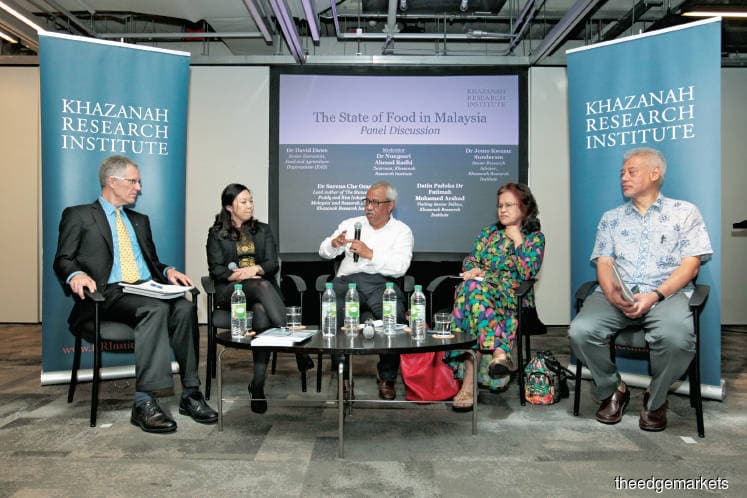
This article first appeared in The Edge Financial Daily on April 11, 2019
KUALA LUMPUR: Malaysia’s rice industry is suffering from too much attention being paid to farmers and consumers, and not enough focus on other components of the supply chain, says Khazanah Research Institute (KRI).
As upstream and downstream policies have been implemented over time, millers and wholesalers have experienced tightening profit margins, forcing them to diversify operations, resort to malpractice or cease operations, KRI said in a report on the status of the country’s padi and rice industry.
“A supply chain is only as strong as its weakest link. There (has been) a squeeze in the middle segment, in the interest of protecting the farmers and consumers,” the report’s author, Dr Sarena Che Omar, said at its launch yesterday.
She added that this “artificial supply chain” had created the need for a buyer of last resort, which is the role of Padiberas Nasional Bhd (Bernas). To compensate for the costs of being that buyer as well as for its social obligations, Bernas also acts as the country’s sole importer.
Rice millers had previously complained about Bernas’ monopoly over rice imports and supply to the market. Bernas is also the sole importer and buyer of last resort for padi at a floor price of RM1,200 per tonne from Malaysian farmers.
Agriculture and Agro-based Industry Minister Datuk Salahuddin Ayub had previously said that the cabinet had agreed to abolish Bernas, although it is still planning how this will be carried out.
Sarena, however, cautions that any actions to change Bernas’ role should take into consideration the effects of such actions on the rest of the industry.
“If you do not want the import rights given to Bernas, think first about how to strengthen the whole supply chain,” she said.
Rice millers in particular operate in a loss-making segment of the supply chain.
“If you are a small to medium-sized miller, you lose RM19 for every tonne of padi that you buy. Millers in Kelantan, because they had the lowest quality grains, actually had to close shop — from 60 mills to one, and now to zero,” Sarena explained.
Meanwhile, Datin Paduka Dr Fatimah Mohamed Arshad, a visiting senior fellow at KRI, said that, “despite years of market intervention and subsidies, the structure of the industry has not changed.”
“The problems remain the same, the farmers remain poor despite six decades of market intervention ... in fact, the industry is getting much more duopolistic, with poor farmers (on one hand) and millers (on the other.)
“In 1971, there were 971 mills and 60% were owned by farmers’ cooperatives. The moment Bernas came in, things changed. There are now 171 mills. That means the downstream side is extremely concentrated.
“That has to change,” Fatimah said during a panel discussion at the launch.
KRI’s study revealed that farmers earn an average that is below even the median wage of the bottom 40 (B40) income bracket. The mean monthly household income of Muda Agricultural Development Authority (Mada) padi farmers in 2016 was RM2,527, compared with the national mean monthly household income of RM2,848 for the B40.
“Until farmers themselves are self-sufficient, don’t expect them to contribute towards the nation’s self-sufficiency,” she said.
On the consumption side, the report highlighted that the high percentage of household income spent on rice by rural, lower income households and migrants makes them the most vulnerable consumers.
Other concerns highlighted by KRI include the low number of seed varieties produced by Malaysia, which are cultivated by only one agency. The Malaysian Agricultural Research and Development Institute is the country’s sole research and development unit for padi-related breeding. As of 2018, the institute had cultivated 49 padi varieties